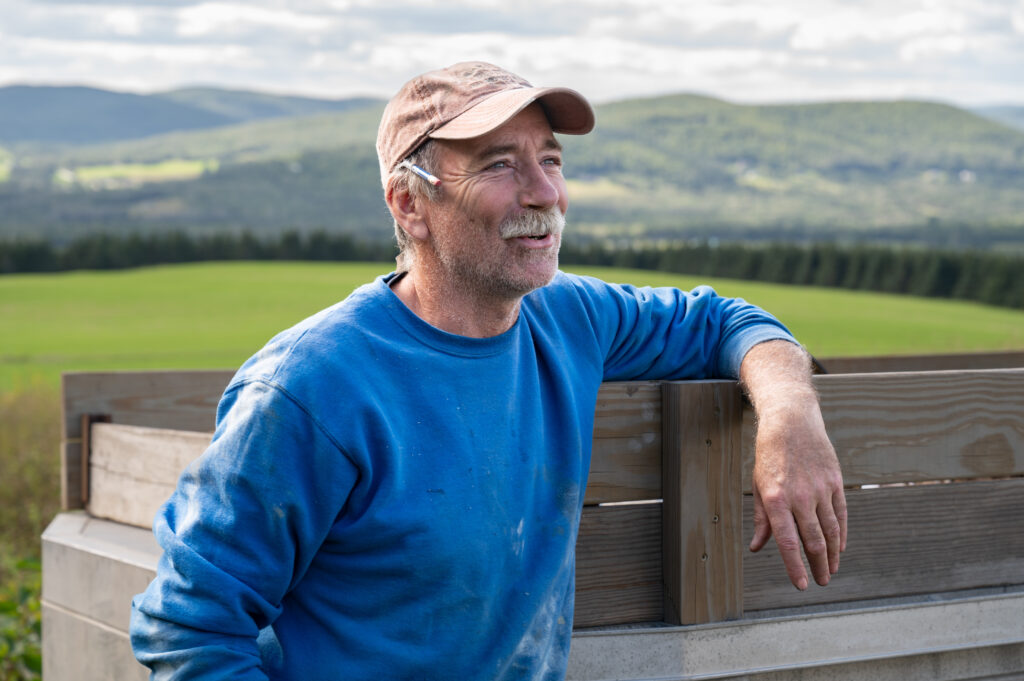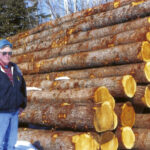
Aroostook County is famous for potatoes, and rightly so, because it grows 90 percent of the state’s crop.
But northern Maine’s 305,000 acres of farmland grow plenty of other crops.
Statewide, agricultural products were worth $870 million in 2022, and a third of that — $291 million — came from The County, according to the U.S. Department of Agriculture’s most recent census, released this year. In fact, Aroostook turned out most of Maine’s soybeans, nearly all of the state’s grains and more hay than any other county.
Some crops are used in rotation to improve the soil, but they’ve also widened profits as growers find more ways to market them. Aroostook’s products are turned into food and beverages throughout Maine and across the country, putting local farmers on the map as far away as Hawaii.
Here are some of The County’s other profitable crops, how they’re used and where they go.

Buckwheat
All of Maine’s buckwheat — 52,000 pounds in 2022 — came from The County’s fields.
Bouchard Family Farms in Fort Kent famously sells its own ploye mix throughout the U.S. and internationally, but newer health trends have recently quadrupled its operation, said Janice Bouchard, who owns the farm with her husband, Joe.
“The ploye mix used to be our primary product, but now it’s more buckwheat flour,” Bouchard said. “That’s because there are a lot of gluten-free people out there that have to learn to eat without gluten.”
A member of the rhubarb family, buckwheat is naturally gluten free, she said.
They used to grow about 200 acres. This year they planted 800 to keep up with new market demand.
Much of their flour goes to Maine Crisp Co. of Winslow for buckwheat crackers, she said. The company has been going through more than six tons of flour a month, so Bouchard Family Farms has stepped up production. Another southern Maine company is using the flour for cheese puffs.
“Gluten free is what’s happening right now,” Bouchard said. “We’re milling pretty much constantly just to keep production running.”
Soybeans and Oats
Aroostook farmers grew about 90 percent of Maine’s oats, or 55.8 million pounds, and just over three-quarters of its soybeans, or 1.74 million pounds, according to the USDA.
Sara and Marcus Flewelling operate the all-organic Aurora Mills and Farm in Linneus, growing about 450 acres of various grains. They produce stone-ground flour, rolled oats and seeds for cover crops.
Flewelling’s father started the farm in 1996. Their flours go to outlets like Borealis Breads in Waldoboro and Night Moves in Portland, she said.
“My father, Matthew Williams, and Jim Amaral of Borealis Breads are the grandfathers of local grain here in Maine. They’re the people who brought back local grain,” she said.
Farming sustainably requires them to rotate crops, she said. The Flewellings grow soybeans and field peas for nitrogen, which helps produce healthy grain.
Aurora’s soybeans go to two Maine-based food producers. Heiwa Tofu of Rockport sells its tofu in Maine, Massachusetts and New Hampshire. Tootie’s Tempeh in Biddeford also uses the organic beans for its own fermented protein products.
The farm’s rolled oats go to several brewers including Allagash Brewing of Portland, which uses them in several beers, Flewelling said. The oats go as cereal to food services at several New England colleges, including Tufts, Boston College, Dartmouth and the University of New Hampshire.

Barley
Of the 33.3 million pounds of barley Maine produced in 2022, 33.2 million pounds came from The County.
Buck Family Farms in Mapleton grows 2,300 acres of grain, mostly barley. Their Maine Malt House division processes the grain into malted barley before selling it to brewers to be used in beer and ale.
Processing raw barley involves three steps: steeping in water to add moisture, germinating or sprouting and roasting. The product is then malt, Jacob Buck said in November.
Maine Malt House supplies more than 80 breweries, Buck said. Most, about 90 percent, are in Maine, including Northern Maine Brewing in Caribou, First Mile Brewing Co. in Fort Kent and Geaghan Brothers of Bangor. The other 10 percent goes elsewhere in New England.
Hay
Aroostook produced more hay, including alfalfa, than any of Maine’s other counties, reaping 33,000 tons in 2022, according to the USDA. Kennebec was second with half of that, 16,790 tons.
Lucerne Farms of Fort Fairfield and Easton grows alfalfa and other types of hay that becomes horse feed and lawn and garden mulch. But a different product has found its way to stores as far away as Hawaii, owner Richard James said.
“We make chicken bedding geared toward backyard chicken enthusiasts,” he said. “It’s a hay and straw blend, but we also use volcanic ash that comes out of New Mexico. We mix it with the hay and straw, and that will eliminate the smell of a chicken coop.”
Many people reuse the bedding in their gardens, he said.
The company’s horse feed blends grasses and alfalfa with other ingredients, like soybean oil and molasses, for different protein levels. The product is sold nationwide through Tractor Supply Co. and other retailers, he said.
The lawn and garden mulch is sold throughout New England.
As these and other agricultural producers, no matter how small they may be, continually break into more markets, they help prove that Aroostook agriculture is more than potatoes.
“We are a very small business, but we try to run with the big dogs and do what they do using all the tools at our disposal,” James said.







